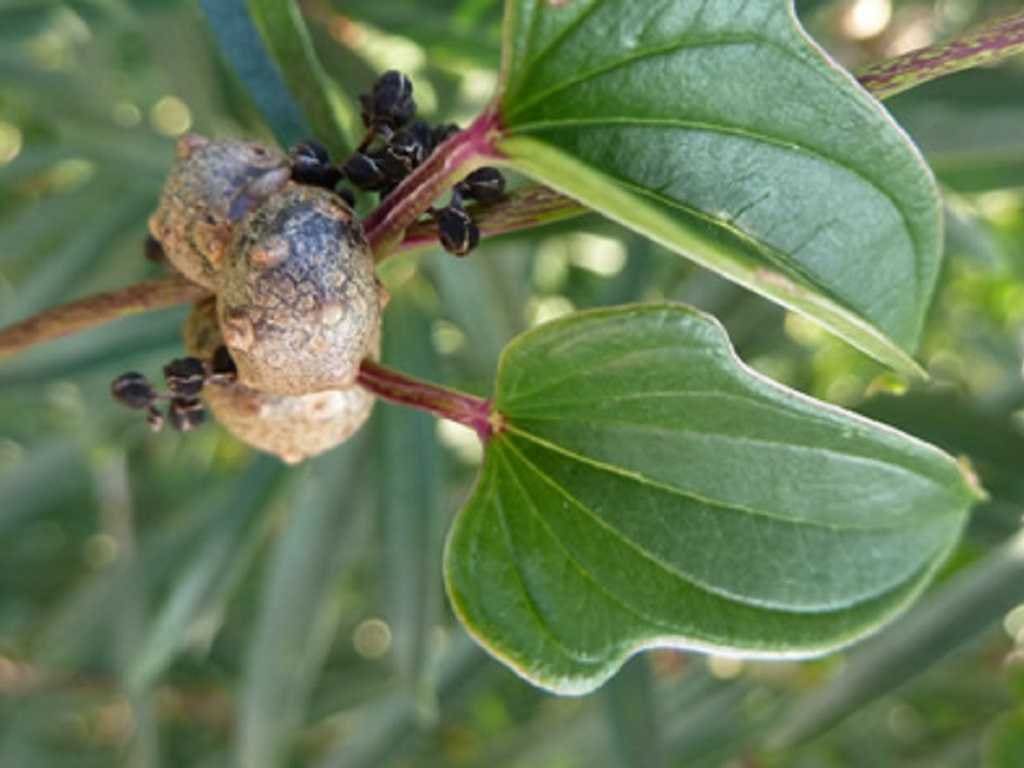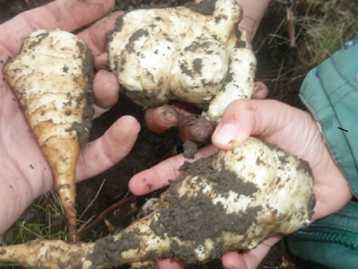Yams In The North
We had always thought that Yams, were something that you could only grow in the tropics. Seen by many as incredibly invasive, and of no value, we have found that Dioscorea batatas does very well in northern climates where the cold winters keeps it from growing as it does in more southern climates like Tennessee and the Carolinas.
Dioscorea batatas is often called Chinese Yam and it is said to have come from the mountains of northern Japan. It is also sometimes called Cinnamon Vine due to its cinnamon scented flowers and can be found being sold in many nurseries as an ornamental. But this plant is much more than an ornamental, as it produces a large underground tuber, which is basically a taproot full of starchy food reserves that keep the vine alive through its dormancy. Yet there is still more, as it also produces edible aerial tubers in the leaf axils that resemble miniature potatoes. And to top it all off, Chinese Yam has been used throughout the centuries for its many medicinal properties.
"My love affair with nature is so deep that I am not satisfied with being a mere onlooker, or nature tourist. I crave a more real and meaningful relationship. The spicy teas and tasty delicacies I prepare from wild ingredients are the bread and wine in which I have communion and fellowship with nature, and with the Author of that nature."
Now there are many who will scoff at the suggestion of cultivating such an invasive plant, saying that it occupies more than its proper place. And perhaps it does when its proper place does not include us waking up to how wonderful this plant actually is. In a world full of potatoes, its a relief to find something similiar that not only taste great, but that is also good for your health.
"With few exceptions, modern human beings are the only living beings that think it is a good idea to completely eliminate the competition. Nature is not a merciless struggle to survive, but a vast network of checks and balances that ensures each species occupies its proper place."

